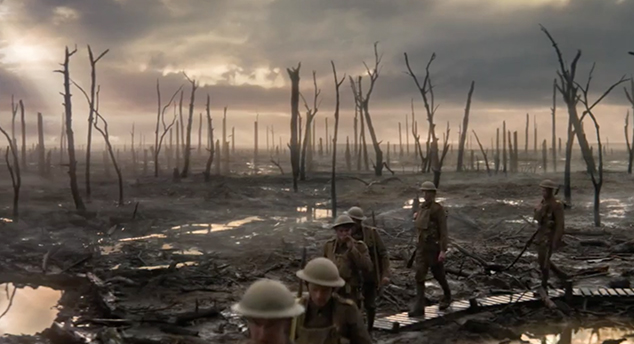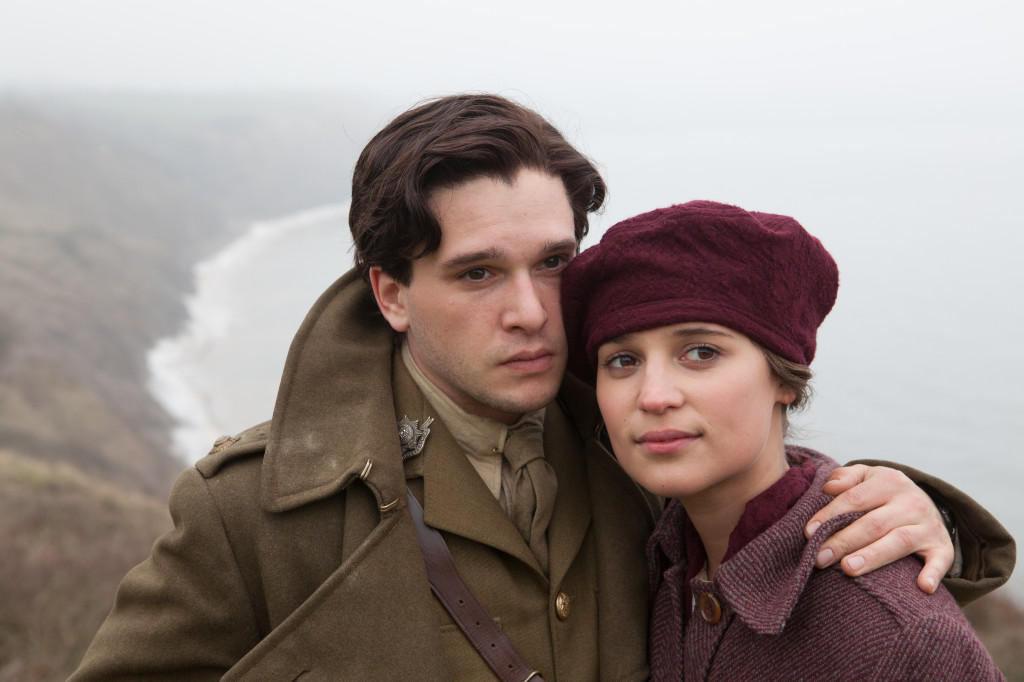Testament of Youth, based on the true story of Vera Brittain, is out now in UK cinemas. Here’s AD Cooper’s take on the movie.
Testament of Youth is the long-anticipated adaptation of Vera Brittain’s memoir. This uniquely feminist take on World War 1 covers Vera’s experiences aged between about 18 and 22. Combining memories, diaries, letters and poems, it was published in the 1930s and it’s been described as the ‘loadstone for a bereaved generation’.
The BBC adapted Vera’s story into an award-winning series in 1979, but this now looks dated with the key roles being played by actors who look more like 35 than 18. The production and performances are strong nonetheless, with Cheryl Campbell as Vera and Peter Woodward as Roland.
The 2014 version
Testament of Youth opened the London Film Festival 2014 to help mark the beginning of the WW1 centenary. Filmed mostly in Yorkshire with support from Screen Yorkshire, it’s directed by James Kent and produced by Rosie Alison and David Heyman (Harry Potter). Vera’s daughter, Shirley Williams (the former MP and now peer) and Vera’s biographer Mark Bostridge had the right of veto on Juliette Towhidi’s script, and enforced the “de-cheesing” of early drafts.
(SPOILERS AHEAD)
Vera’s Story
Vera is an 18-year-old provincial middle-class girl in 1914 who is expected to stay home, play her new piano, and wait for marriage proposals. But she’s bright, articulate and determined to go to Oxford University. She’s delighted to get in especially since her brother Edward and his school friends Roland Leighton and Victor Richardson will join her there. However, war breaks out, and the boys go off to fight instead.
Very quickly Vera and Roland fall in love, but their romance is dogged by separation, the war, and the morals of the era – they had to be chaperoned at all times and even the smallest touch in public was frowned upon. The tantalizing sexual tension between Kit Harrington as Roland and Alice Vikander as Vera is well portrayed in the film.
Frustrated by the studies she once yearned for, Vera abandons Oxford and volunteers as a nurse. After a tough initiation to nursing, she gets transferred to the army hospital at Etaples in northern France. Here she has to deal with a grim conveyor belt of the mutilated casualties arriving from the front, depicted in a wide shot of the wounded on stretchers nicked straight from Gone with the Wind (by the director’s own admission).
A ghastly sense of inevitability pervades the narrative. One by one, all of Vera’s men die, including Edward’s new army chum Geoffrey Thurlow. It’s a searing story of terrible loss but in this film, it all felt a bit distant – and I don’t think that was because I knew what was going to happen.
Intriguing departures from the story
From a narrative viewpoint, it was interesting to see what parts of the story were changed to maximize the drama. She was never engaged to Roland although she’s depicted as waiting to marry him when she hears he’s died of wounds. This dramatic license was effective in upping the sense of loss. Also, her still-living brother was never dumped in amongst the dead – this felt like a scene nicked from that other WW1 story Birdsong (currently being made into a feature after a slightly dodgy TV series). But it added to tension, and revealed more of Vera’s character.
Great casting
Swedish actress Alice Vikander is luminously beautiful as Vera, and the camera lingers lovingly on her face. We see her sense of pain and loss all too clearly – it’s an intelligent, contained performance. There’s just one problem with her – she doesn’t sound English amongst the clipped Brit accents. She also never looks dreadful even when apparently exhausted – such is the luck of leading ladies to look wonderful and beautifully lit at all times. The real Vera had a rather humorless intensity and it doesn’t make for a warm character on film. You feel sorry for her but you don’t engage.
Kit Harrington is well-depicted as the muscular soldier-poet deeply affected by the horrors of war. After so much professional glowering in Game of Thrones, it was strange to see him smiling and flirting with Vera.
The supporting cast are terrific too. In particular, Dominic West as Vera’s father does very little yet conveys so much, Miranda Richardson is starchy and corseted as the blue-stocking Oxford don, and Colin Morgan (Merlin) is engaging and earnest as the fresh-faced Victor who’s also in love with Vera.
An affecting moment is when the telegram boy is seen cycling over the hill towards the Brittain family home in the Peak District. We know something dreadful is coming. But instead of the clichéd image of the knock at the door and the father’s reaction to his son’s death, we just hear it off camera. It’s very strong.
Not much evidence of writing
“Be a writer,” yells Roland as a parting shot. In reality, Vera wrote some incredible poetry and prose (especially later as an ardent pacifist), but we hear little of her writing in the film beyond a few letters. Roland also wrote some great, almost forgotten war poetry and a couple of his poems are read in voiceover by Kit Harrington (albeit mysteriously edited).
Capturing the era

Depiction of the Front is very believable with this CGI-ed shot a direct adaptation of a famous photograph.
The big set pieces at Oxford, the overcrowded hospitals, and busy streets are very evocative, and the production design captures the period with enormous care – all for the £8m budget. Particularly impressive are the shots of the steam trains chugging off loaded with the nervous soldiers leaving the tearful women behind.
Costumes without dramas
Like most teenage girls, Vera loved her clothes, and helpfully for the wardrobe department, she describes precisely what she’s wearing on particular occasions in her diary. The attention to detail especially the uniforms was excellent, but there are a couple of tiny historical inaccuracies:
- Wristwatches were state of the art in 1915 and only worn by rich officers until 1917 when they became more standard army issue. Vera would perhaps not have owned one until she went back to Oxford in 1919.
- Moustaches: under Army Regulations, every man who could grow a moustache had to grow one. There is a notable lack of facial hair on the central male characters.
But perhaps that’s just nit picking on a beautiful-looking film that ticks a lot of the right boxes.
In Memoriam
The film is dedicated to Roland, Edward, Victor and Geoffrey. It’s a great touch.







Another historical inaccuracy was the trench scenes from 1915 showed the wearing of Brodie steel helmets, not generally issued until 1916